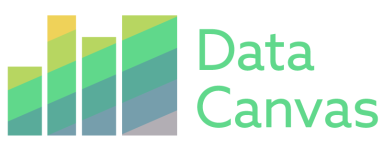Latest Updates
Get Inspired: Visualization Tools & Resources
Wondering where to get started? We’ve compiled a few useful lists about easy to use visualization tools and some visualizations we really like that look at data from an interesting perspective. We hope you get inspired and we can’t wait to see all of your projects. Don’t forget, you can be as creative as you wish in your format, and integrate any existing openly available datasets you wish! Submit to our Data Art Challenge by March 20th!
Visualization Tools
- Cartodb is a cloud-based solution for creative mapping of data.
- Connect live data sources to Infogram’s infographics, charts and visualizations.
- D3.js is a JavaScript library for manipulating documents based on data.
- Leaflet is an Open-Source JavaScript library for mobile-friendly interactive maps.
Inspirations using d3
- http://weather.zanarmstrong.com
- http://halftone.co/portfolio/global-temperatures/
- http://bl.ocks.org/syntagmatic/fc62d1de6ada1e06b803
- http://windhistory.com/station.html?KEWN
- http://windhistory.com/map.html#8.00/35.300/-76.083
- http://multimedia.scmp.com/china-air-pollution-in-2014/
- http://www.maartenlambrechts.be/vis/warm2014/warm2014.html
- https://twitter.com/d3visualization
Sensing the Environment – An Interview with Olga Saukh, PhD from OpenSense, ETH Zurich
Data Canvas: What are you doing within OpenSense at ETH Zurich?
Olga Saukh: OpenSense is a framework of several projects aiming to gain insights about variations of urban air quality, its causes, and how it impacts citizens’ health.
Cities attract many people for plentiful job opportunities, better logistics, education, urban lifestyle. One downside of this trend is high traffic and increased pollution. OpenSense consolidates engineers, environmental scientists and health specialists across several leading Swiss research institutions to develop tools, methods and models which would allow every citizen to become aware about the quality of the air he or she breathes, associated health threats and the share of his behaviour and lifestyle in it.
As part of OpenSense (http://www.opensense.ethz.ch), my colleagues at ETH Zurich and I are focusing our activities on measuring and modeling urban air quality and understanding what its driving factors at different locations are. Supported by VBZ, Empa, FHNW, Lunge Zurich and the city of Zurich, we have successfully been operating ten air quality measurement stations on top of ten trams in Zurich over the past three years. By now, we gathered a unique urban air quality data set comprising more than 100 million measurements, which we used to construct high-resolution air pollution maps of Zurich (http://goo.gl/H6QSSF).
These maps enable applications that were not possible before. For example, using the maps the hRouting smartphone app (http://goo.gl/fz2f8l) analyzes how much urban residents can reduce their exposure to air pollution by taking a healthier route instead of the shortest one.
DC: What challenges are you facing while measuring and analyzing air quality and other environmental data today?
OS: Advances in sensor technology constantly widen the spectrum of environmental phenomena that can be measured by bringing small, cheap, and portable sensors onto the market. Whilst this newly available low-cost technology provides exciting opportunities, such sensors exhibit reduced accuracy, poor precision, and low reliability. Additionally, measuring air pollution differs from measuring temperature, light and noise: It is often difficult to conclude on air quality based on one’s own senses.
On the one hand, polluted air may neither taste, nor smell, nor irritate the eyes (e.g., radiation). On the other hand, not everything that smells or tastes can be attributed to pollution. Therefore, the main challenge we face when measuring air quality is to ensure that measurements are accurate and reflect the real environmental situation.
To this end in OpenSense we are working on automatic sensor calibration, sensor failure detection and smart data filtering algorithms in order to make collected data useful for further analysis and applications.
DC: What’s the value of a low-tech, DIY and crowd sourced approach we choose for ‘Data Canvas: Sense Your City’?
OS: Cities are complex systems which are difficult to understand without the right set of information. Today we increasingly have affordable technology to record, store and analyse all kinds of data and we can use it to make our cities better places to live in.
I admire the approach behind Data Canvas and I am convinced it promotes the right technology to collect and use real city data. The popularity of such public projects clearly shows the interest of citizens to stay in a closer relationship with the city. Many citizens are ready to contribute in order to solve most important city problems. Provided adequate sensors and sufficient data quality, gathered data can be used to asses the impact a city has on human health, wellbeing and natural environment.
Thanks Olga!
Data Canvas: Let’s Get Started with Stamen Design + Infogr.am
To help inspire you for Data Canvas: Sense Your City, we are organizing educational meet ups worldwide for you to work on your own project for the Data Art Challenge, get guidance from experts in the field, and participate in tutorial sessions in cutting-edge data visualization tools. On February 22, we invited media artist Taurin Barrera, Beth Schechter and Eric Gelinas from Stamen Design, and Infogr.am‘s founder Mikko Jarvenpaa to share their data visualization knowledge with the Data Canvas community in San Francisco. If you couldn’t make it, check out the videos below and get inspired to submit!
